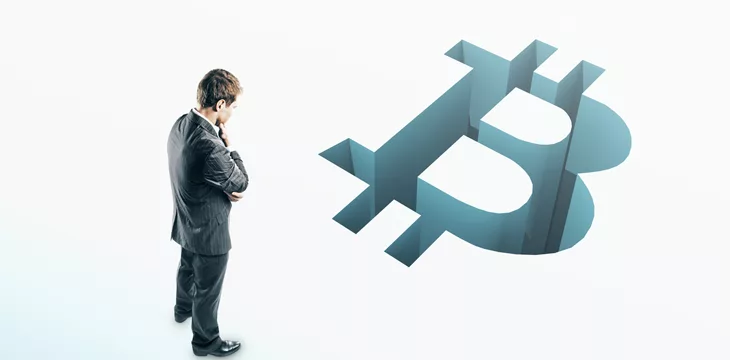|
Getting your Trinity Audio player ready...
|
When I first read the Bitcoin white paper toward the end of 2017, its clear superiority as a payment system compared to credit card processing stood out the most. At the time, I was in the middle of a project upgrading an enterprise client’s online payment processing to operate with their new e-commerce platform. The low fee, instant settlement, and irreversible payments were a clear winner in terms of technology and risk compared to cumbersome, error-prone, and expensive credit card integration. However, almost six years later, despite these clear technical advantages, we still have not seen any meaningful blockchain adoption by legacy companies that generate significant revenue.
This is simply a fact; more recognized companies (Steam, Microsoft [NASDAQ: MSFT]) had adopted Bitcoin as payment, for example, in 2016-2017 than do now. We must understand that existing companies are and will remain reluctant to touch this technology until its price is more stable, sufficiently regulated, and more secure. Given this, why would large companies be the first to adopt it? They would at least do so after the government, which likely would not adopt themselves until they have regulated the technology!
Of course, many individuals will try to get their companies to adopt blockchain from the inside with limited success. The largest hurdle I encountered in attempting to do so sparsely from the end of 2017 until I ended up leaving two years later was the predominant, entrenched narrative that Bitcoin is slow and expensive. According to the status quo, Ethereum was better because of its smart contracting capabilities. Note that the company leaders make top-down decisions in this regard. In my company’s case, C-level executives had already funded some employees to try an integration with Ethereum, and thus would not even entertain a Bitcoin solution. Even if I did convince my boss of Bitcoin’s merits as an immutable timestamp ledger, he would fail to be convinced. This hierarchy is likely the biggest headwind against any reasonable company in terms of adopting any new tech, let alone something as bleeding edge or controversial as blockchain and Bitcoin.
What if the leaders of a company are already convinced that Bitcoin and blockchain are the future? Well, we already have a concrete example of this. Even though Twitter is a consumer application, in terms of size and scale, we can consider the company an enterprise, as well as since it was formerly publicly traded on the NYSE. Jack Dorsey, the founder and former CEO, is a huge Bitcoin proponent. Do you see Bitcoin anywhere on Twitter today? Are you able to send BTC to another user? How about tipping? Are any social interactions recorded on the blockchain?
No, no, no, and no.
Twitter did attempt to implement the failing Lightning Network but shut that product down after just one year due to pitiful usage, failing to accrue over $8500 in volume. We have a hard example of an enterprise with the “Bitcoin” guy as the leader, who needs no convincing yet cannot successfully integrate the technology. Even when they do, it is not even Bitcoin or blockchain, but the custom Lightning Network. If Twitter cannot do it, why do we expect that other entities that have any type of hierarchal structure will manage to make any headway?
In fact, we see many examples of the opposite. Individuals and small teams who are enthusiasts are at the forefront of innovating via this tech. We must recognize this fact as the market approaches a critical point where the entire industry has been flipped on its head due to BTC starting to be useful. The faster this is recognized, the faster real, in-demand use cases will manifest as those efforts have at least a chance of success.
Watch BSV Stories – Episode 8: Blockchain ticks all the boxes for India’s thriving e-commerce market

 07-11-2025
07-11-2025 





